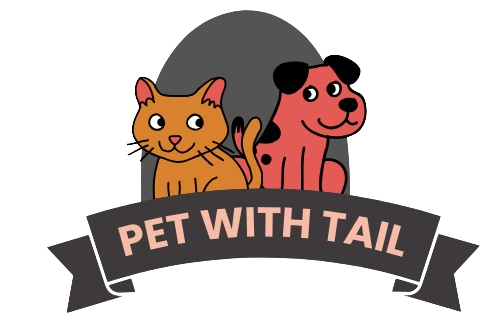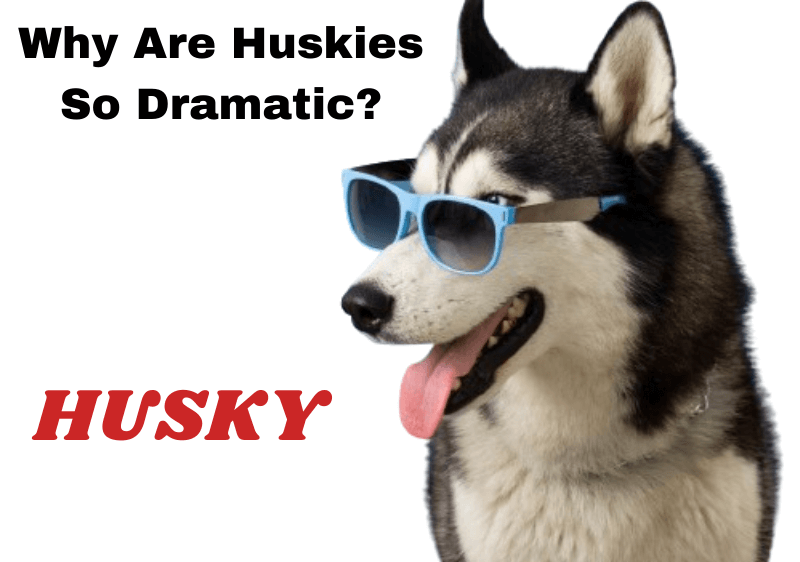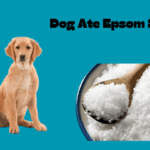Have you ever wondered Why Are Huskies So Dramatic? and act like drama queens (or kings)? Do you sometimes feel like you are living with a furry toddler who throws tantrums, talks back, and refuses to listen?
You’re not alone if you said “yes” to any of these questions. Huskies are known for being one of the most dramatic dog breeds in the world, and they can make their owners laugh, cry, and scratch their heads with their antics. In this blog post, I will share with you why huskies are so dramatic and how to deal with their behavior.
You will learn about the origins and characteristics of the husky breed, such as their intelligence, independence, and vocalization. You will also get some practical tips and advice on how to train and manage your dramatic husky’s behavior, such as using positive reinforcement, providing enough exercise and stimulation, setting boundaries and rules, and being consistent and patient.
Finally, you will discover how to enjoy and appreciate your husky’s drama, such as their personality, loyalty, affection, and fun. Whether you are a new or experienced husky owner or just a curious dog lover, this peace of knowledge will help you understand and love your husky better. So, sit back, relax, and get ready to learn more about the most dramatic dog breed in the world!
Contents
Why Are Huskies So Dramatic? and What Makes It Dramatic
Huskies are a working dog breed originating from the cold and harsh regions of Siberia. They were bred to pull sleds and survive in extreme conditions, and they have a strong bond with their human companions. Huskies are also known for their striking appearance, with their thick fur, blue or brown eyes, and wolf-like features.
But what makes huskies so dramatic? The answer lies in their unique personality and behavior, which are influenced by their history and genetics. Here are some of the traits that make huskies dramatic:
- Intelligence: Huskies are very smart and curious dogs, and they can learn new things quickly. However, this also means that they can get bored easily and need constant mental stimulation. If they are not challenged or entertained, they may resort to destructive or mischievous behavior, such as chewing, digging, or escaping.
- Independence: Huskies are not very obedient or submissive dogs, and they have a mind of their own. They are not eager to please their owners, and they may not listen to commands or follow rules. They may also challenge their owners’ authority and test their limits. This can make them seem stubborn or defiant, especially when they don’t want to do something.
- Vocalization: Huskies are very vocal dogs, and they have a wide range of sounds and expressions. They can howl, bark, whine, growl, and even talk. They use their voice to communicate their needs, feelings, and opinions, and they may not be shy or quiet about it. They may also use their voice to get attention, express excitement, or protest something. huskies are so vocal and dramatic and express their feelings through vocals.
- Energy: Huskies are very energetic and active dogs, and they need a lot of physical exercise and play. They can run for miles and hours, and they love to explore and chase things. If they are not given enough outlets for their energy, they may become restless, frustrated, or hyperactive. They may also vent their energy in inappropriate ways, such as jumping, nipping, or running away. These traits can make huskies dramatic, but they can also make them fun, loyal, and affectionate. Huskies are not naughty dogs, they are just different and unique. They have a lot of personality and character, and they can make their owners laugh, cry, and scratch their heads with their antics.
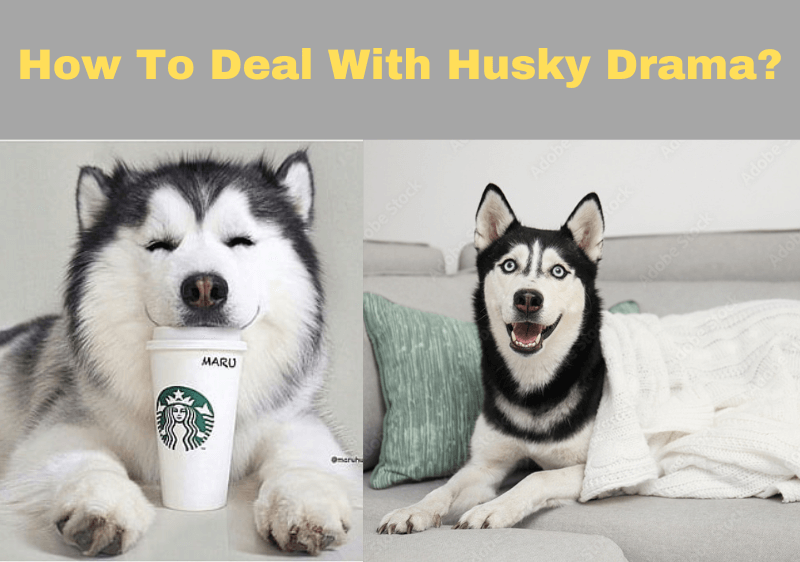
How to deal with husky drama?
Why is Huskyv so dramatic its drama can be amusing, but it can also be frustrating and challenging. If you want to have a happy and harmonious relationship with your husky drama, you need to learn how to deal with their behavior. Here are some practical tips and advice on how to train and manage your husky’s behavior:
- Use positive reinforcement: Huskies respond better to rewards than punishments, and they need a lot of praise and encouragement. Use treats, toys, and affection to reward your husky for good behavior, such as following commands, being quiet, or being calm. Avoid scolding, hitting, or yelling at your husky for bad behavior, as this can make them more defiant or fearful. Instead, ignore or redirect their behavior, or use a firm but calm voice to correct them.
- Provide enough exercise and stimulation: Huskies need a lot of physical and mental activity to keep them healthy and happy. Make sure you give your husky at least an hour of exercise every day, such as walking, running, hiking, or playing fetch. You can also enroll your husky in agility, obedience, or sledding classes, or join a husky club or group. In addition, provide your husky with plenty of toys, puzzles, and games to keep them entertained and challenged. You can also rotate their toys or hide them around the house to make them more interesting.
- Set boundaries and rules: Huskies need structure and consistency to feel secure and confident. Establish clear and simple rules for your husky, such as where they can sleep, eat, or play, what they can chew or bite, and how they can greet or interact with people and other animals. Make sure you enforce these rules consistently and fairly and do not let your husky get away with breaking them. You can also use a crate, a leash, or a fence to limit your husky’s access to certain areas or things.
- Be consistent and patient: Huskies are not easy to train, and they may take longer to learn or obey than other dogs. Do not expect your husky to be perfect or to change overnight. Be patient and persistent with your husky, and do not give up or lose your temper. Repeat the same commands and signals, and use the same tone and gestures. Train your husky in short and frequent sessions, and make them fun and rewarding. You can also seek professional help or advice from a trainer, a vet, or a husky expert if you encounter any problems or difficulties.
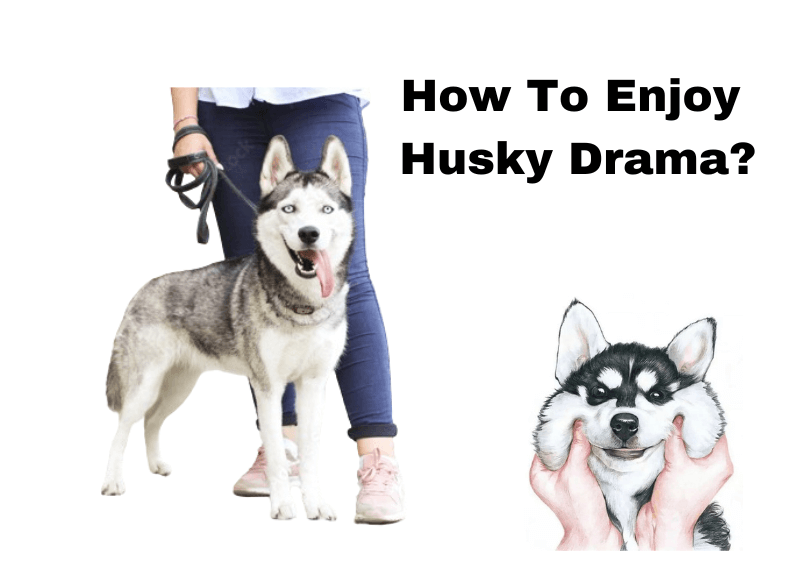
How to enjoy husky drama?
A Husky drama can be challenging, but it can also be enjoyable and rewarding. Are Huskies dramatic or having a dramatic husky can enrich your life and make it more fun and exciting? Here are some of the positive aspects and benefits of having a dramatic husky:
- Personality: Why are Huskies so weird? They have a lot of personality and character, and they can make you laugh, smile, and wonder with their antics. They are not boring or predictable, and they can surprise you with their creativity and intelligence. They can also express their emotions and opinions, and they can communicate with you in their way.
- Loyalty: Huskies are very loyal and devoted to their owners, and they will always be by your side. They are not aloof or indifferent, and they will show you their love and affection. They will also protect you and your family from any danger or threat, and they will not hesitate to defend you.
- Affection: Huskies are very affectionate and cuddly, and they love to snuggle and kiss you. They are not shy or reserved, and they will seek your attention and approval. They will also comfort you and cheer you up when you are sad or stressed, and they will make you feel better.
- Fun: Huskies are very fun and playful, and they love to have a good time. They are not lazy or dull, and they will keep you active and entertained. They will also challenge you and teach you new things, and they will make you grow and learn.
I have a husky named Luna, and she is the most dramatic dog I have ever met. She is also the most amazing and adorable dog I have ever loved. Here are some of the examples and stories of how we have bonded and entertained each other:
- Luna loves to howl, especially when she hears sirens, music, or other dogs. She also likes to talk back to me when I tell her to do something or when I scold her. She has a very expressive and loud voice, and she can make different sounds and noises. Sometimes, she sounds like a human, and sometimes, she sounds like a wolf. She can also imitate other animals, such as cats, birds, or cows. She makes me laugh with her vocalizations, and she also makes me listen to her.
- Luna is very independent and stubborn, and she does not like to follow commands or rules. She also likes to challenge me and test my patience. She often does the opposite of what I tell her to do, or she ignores me completely. She also likes to steal things, such as food, socks, or shoes, and she hides them in her crate or under the bed. She makes me frustrated with her defiance, but she also makes me respect her.
- Luna is very energetic and adventurous, and she loves to run, explore, and chase things. She also likes to play games, such as fetch, tug-of-war, or hide-and-seek. She often escapes from the leash or the fence, and she runs away to have fun. She also likes to jump on me, nip me, or run around me. She makes me tired with her activity, but she also makes me happy.
- Luna is very loyal and affectionate, and she loves to be with me. She also likes to snuggle and kiss me, and she sleeps next to me every night. She always greets me when I come home, and she follows me everywhere I go. She also comforts me and cheers me up when I am sad or stressed, and she makes me feel better. She makes me feel loved with her cuddles, and she also makes me love her.
Luna is a dramatic husky, but she is also a wonderful husky. She has enriched my life and made it more fun and exciting. She has also taught me a lot of things, such as patience, perseverance, and gratitude. I appreciate and love her for who she is, and I would not change her for anything.
Huskies: A Brief History of the Arctic Sled Dogs
If you are a dog lover, you have probably heard of or seen a husky. Huskies are medium-sized dogs with thick fur, pointed ears, and striking blue or brown eyes. They are known for their speed, endurance, and intelligence, as well as their friendly and playful personalities. But did you know that there are different types of huskies and that they have a long and fascinating history? In this article, we will explore the origins, characteristics, and modern roles of these amazing Arctic sled dogs.
Origins of the Husky Breed
Huskies are believed to have originated from the Chukchi people, a nomadic tribe that lived in the northeastern part of Siberia. The Chukchi bred huskies for thousands of years, selecting them for their ability to pull sleds over long distances in harsh winter conditions. Huskies were not only working dogs but also companions and family members for the Chukchi people.
Huskies are closely related to the extinct Taimyr wolf, a subspecies of gray wolf that lived in the Arctic region until about 200 years ago. Huskies share many genetic and physical traits with other Arctic breeds, such as the Samoyed, the Alaskan malamute, and the Greenland dog.
Huskies were introduced to other parts of the world by explorers and traders who visited Siberia and Alaska. In the late 19th and early 20th centuries, huskies became popular for sled dog racing and polar expeditions, as they proved to be faster and more adaptable than other breeds. Huskies also played a vital role in delivering medicine and supplies to remote areas, such as the famous 1925 serum run to Nome, Alaska.
Types of Huskies and Their Differences
There are many types of huskies, each with their unique features and personalities. Here are 10 of the most common husky dramatic dog breeds and their differences:
- Siberian husky: why are Siberian huskies so dramatic? The most well-known and widely recognized husky breed, the Siberian husky has a thick double coat, a curled tail, and a variety of coat colors and patterns. They are typically between 20 and 24 inches tall and weigh between 35 and 60 pounds. They are energetic, loyal, and independent, but also need a lot of exercise and training.
- Alaskan malamute: The largest and oldest of the husky breeds, the Alaskan malamute has a heavy coat, a plumed tail, and a broad head. They are usually between 23 and 25 inches tall and weigh between 75 and 85 pounds. They are strong, calm, and affectionate, but also stubborn and dominant. They are better suited for heavy hauling than speed.
- Alaskan husky: The Alaskan husky is not a purebred, but a mix of various northern breeds, such as the Siberian husky, the Alaskan malamute, and the German shepherd. They are bred for performance rather than appearance, so they vary widely in size, shape, and color. They are usually between 20 and 26 inches tall and weigh between 40 and 60 pounds. They are fast, agile, and hardworking, but also require a lot of attention and stimulation.
- Sakhalin husky: The Sakhalin husky, also known as the Karafuto ken, is a rare and endangered husky breed that originated from Sakhalin Island, a Russian territory near Japan. They have a thick coat, a curled tail, and a wolf-like appearance. They are usually between 22 and 26 inches tall and weigh between 66 and 88 pounds. They are brave, loyal, and resilient, but also independent and aloof.
- Mackenzie River husky: The Mackenzie River husky is another mixed breed that originated from the Mackenzie River region in Canada. They are a blend of various native and imported breeds, such as the Siberian husky, the Alaskan malamute, and the Canadian Eskimo dog. They have a dense coat, a bushy tail, and a muscular build. They are usually between 25 and 28 inches tall and weigh between 90 and 140 pounds. They are powerful, intelligent, and friendly, but also territorial and protective.
- Labrador husky: The Labrador husky is not a cross between a Labrador retriever and a husky, but a distinct breed that originated from the Labrador region in Canada. They have thick coats, a straight tail, and a wolf-like appearance. They are usually between 20 and 28 inches tall and weigh between 60 and 100 pounds. They are social, gentle, and obedient, but also need a lot of exercise and companionship.
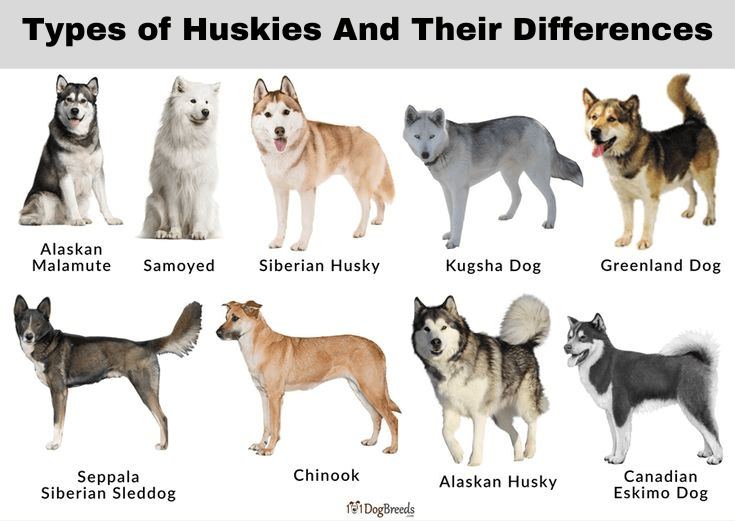
- Greenland dog: The Greenland dog is one of the oldest and purest of the husky breeds, dating back to prehistoric times. They have a thick coat, a curled tail, and a variety of coat colors and markings. They are usually between 22 and 25 inches tall and weigh between 66 and 70 pounds. They are loyal, hardy, and independent, but also stubborn and dominant.
- Seppala Siberian sleddog: The Seppala Siberian sleddog is a rare and specialized husky breed that was developed by Leonhard Seppala, a Norwegian sleddog racer and explorer. They have a medium-length coat, a sickle tail, and a narrow head. They are usually between 19 and 23 inches tall and weigh between 35 and 50 pounds. They are fast, agile, and intelligent, but also sensitive and reserved.
- Tamaskan dog: The Tamaskan dog is a relatively new and modern husky breed that was created in Finland in the 1980s. They have thick coat, a straight tail, and a wolf-like appearance. They are usually between 24 and 28 inches tall and weigh between 50 and 99 pounds. They are friendly, trainable, and versatile, but also need a lot of mental and physical stimulation.
- Utonagan dog: The Utonagan dog is another new and modern husky breed that was created in the UK in the 1980s. They have a long coat, a plumed tail, and a wolf-like appearance. They are usually between 23 and 30 inches tall and weigh between 55 and 110 pounds. They are affectionate, loyal, and sociable, but also need a lot of exercise and attention.
Read more about Brown Nose Puppy and its breeds
Huskies Today: From Sled Dogs to Pets
Huskies are still used for sled dog racing and adventure trekking in many parts of the world, especially in the Arctic regions. They are also popular as pets, as they are attractive, intelligent, and fun-loving dogs. However, huskies are not suitable for everyone, as they have some special needs and challenges.
Huskies need a lot of exercise and stimulation, as they are bred to run and work. They can become bored, destructive, and vocal if they are not given enough outlets for their energy and curiosity. Huskies also need a lot of training and socialization, as they are independent and have a strong prey drive. They can be stubborn, escape-prone, and aggressive toward other animals if they are not properly trained and supervised.
Huskies also need a lot of grooming and care, as they have a thick coat that sheds heavily twice a year. They need regular brushing and bathing to keep their coat healthy and clean.
Huskies also need a cool and comfortable environment, as they are prone to overheating and dehydration in hot and humid climates. Huskies also need a balanced and nutritious diet, as they are prone to some health issues, such as hip dysplasia, eye problems, and skin allergies.
Huskies are wonderful dogs for people willing and able to provide them with the proper care and attention they deserve. Huskies are loyal, playful, and affectionate dogs that can form strong bonds with their owners and families. Huskies are also intelligent, adaptable, and versatile dogs that can excel in various activities and sports, such as agility, obedience, and therapy.
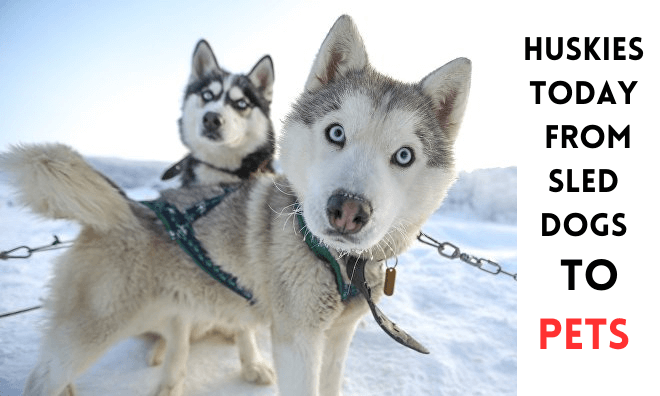
Conclusion
Huskies are one of the most dramatic dog breeds in the world, and they can make their owners laugh, cry, and scratch their heads with their antics. In this blog post, you learned why are huskies so dramatic and how to deal with their behavior.
You also discovered how to enjoy and appreciate your husky’s drama, and how having a dramatic husky can enrich your life and make it more fun and exciting.I hope you enjoyed reading this blog post and learned something new and useful. If you have a dramatic husky or love huskies,
I would love to hear from you. Please leave a comment below and share your own experiences and questions about husky drama. I would also appreciate it if you could share this blog post with your friends and family who might be interested in huskies.
Thank you for reading and supporting my blog. If you want to read more of my blog posts, you can check out my other articles on my blog.
Until next time, stay happy and healthy with your husky!
FAQs AboutWhy Are Huskies So Dramatic?
Q1: Why are huskies so dramatic?
A: Huskies exhibit dramatic behavior due to their intelligence, independence, vocalization, and high energy levels. Their unique traits, shaped by genetics and history, contribute to their expressive and sometimes challenging demeanor.
Q2: How can I deal with my husky’s dramatic behavior?
A: Managing husky drama involves using positive reinforcement, providing ample exercise and mental stimulation, setting clear boundaries, and maintaining consistency. Patience and persistence are key in training, and seeking professional advice can help address specific challenges.
Q3: What makes huskies enjoyable despite their drama?
A: Despite their dramatic tendencies, huskies offer a wealth of positive qualities. Their vibrant personality, loyalty, affection, and playful nature make them enjoyable companions. Embracing their quirks can lead to a fulfilling and rewarding relationship
Q4: What is the history of huskies and their role as sled dogs?
A: Huskies originated from the Chukchi people in Siberia, serving as both working dogs and companions. Their history includes contributions to sled dog racing, polar expeditions, and crucial missions like the 1925 serum run to Nome, Alaska.
Q5: Are huskies suitable as pets, and what care do they require?
A: Yes, huskies make great pets for those willing to meet their specific needs. However, they require extensive exercise, training, grooming, and a cool environment. Owners should be prepared for challenges like shedding, potential health issues, and the need for a balanced diet.
